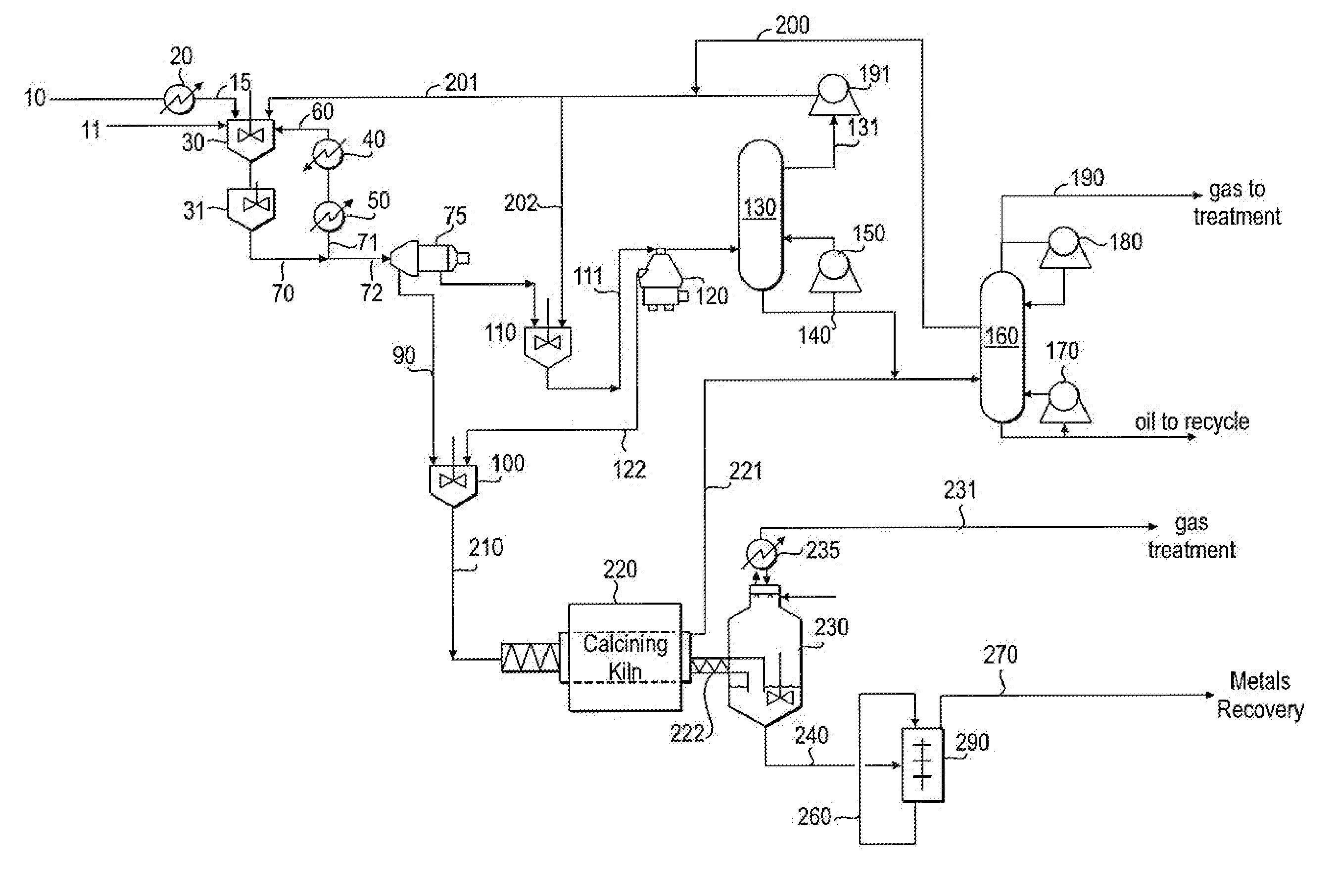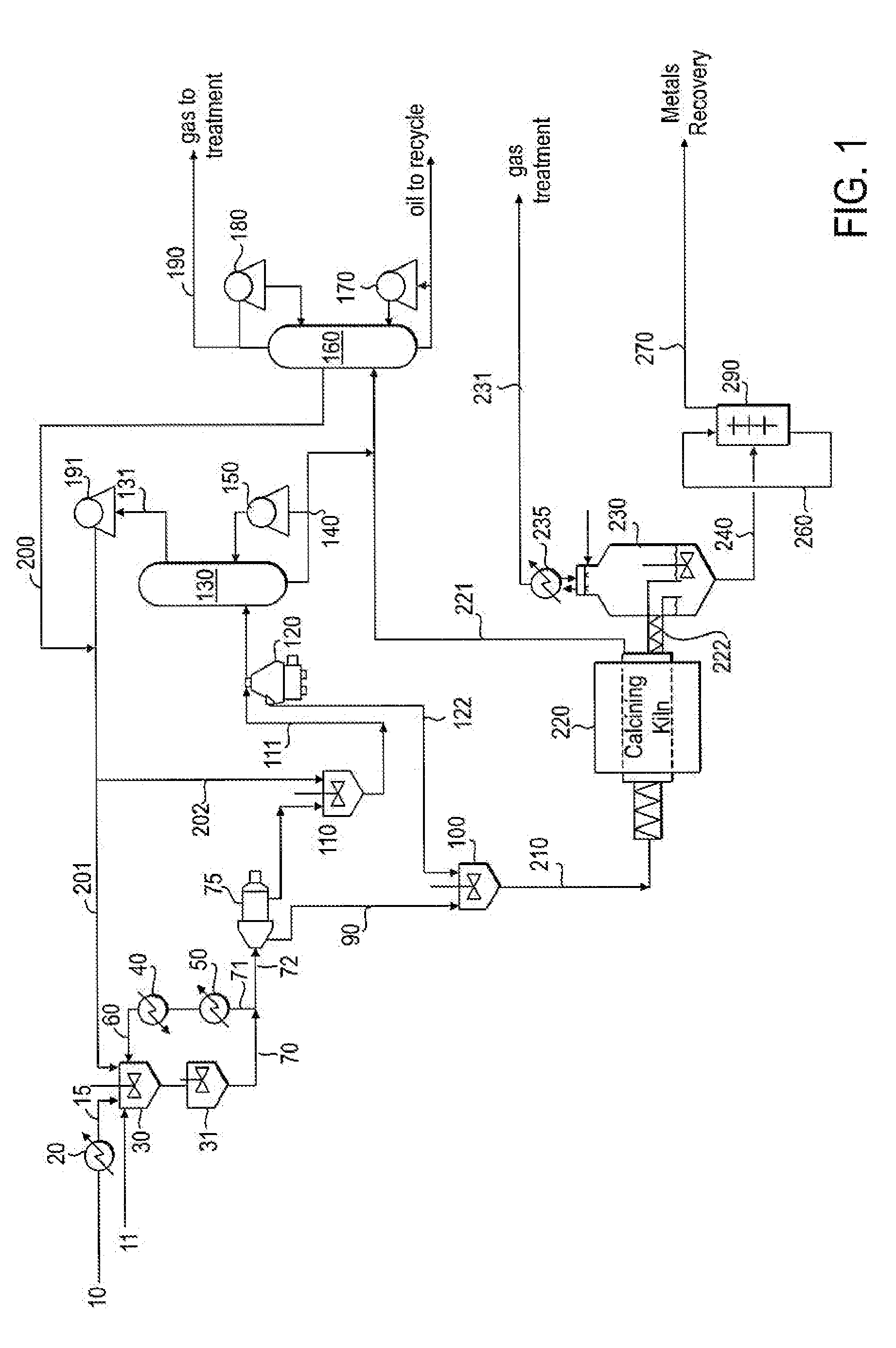Process for recovering ultrafine solids from a hydrocarbon liquid
a hydrocarbon liquid and ultrafine solids technology, applied in the direction of moving filter element filters, separation processes, filtration separation, etc., can solve the problems of increasing the need for fresh makeup catalysts, and increasing the cost of both supported and unsupported catalysts. , to achieve the effect of improving the efficacy of methods
- Summary
- Abstract
- Description
- Claims
- Application Information
AI Technical Summary
Benefits of technology
Problems solved by technology
Method used
Image
Examples
example
[0027]To demonstrate this invention laboratory bench scale testing of various hydrocarbonaceous fluids was conducted to determine the minimum asphaltene content desirable to effect successful precipitation or flocculation of asphaltene (flocculent) when exposed to a flocculation agent (flocculant) such as heptane or naphtha. These tests indicated that a minimum threshold of 2.5 weight % (wt %) asphaltene content is preferable for successful flocculation of micron sized particulate matter suspended in the hydrocarbonaceous fluids, such as a slurry catalyst. It was also determined that oils with insufficient asphaltene content can be enriched with asphaltenes by adding asphaltene rich materials such as a vacuum residuum, as in this example, or other heavy oil containing asphaltenes. Accordingly, a hydrocarbonaceous oil slurry containing approximately 20 weight % catalyst solids and having an asphaltene content of at least 2.5 weight % (as measured; by a Hot Heptane Asphaltenes Test (T...
PUM
| Property | Measurement | Unit |
|---|---|---|
| Temperature | aaaaa | aaaaa |
| Temperature | aaaaa | aaaaa |
| Temperature | aaaaa | aaaaa |
Abstract
Description
Claims
Application Information
 Login to View More
Login to View More - R&D
- Intellectual Property
- Life Sciences
- Materials
- Tech Scout
- Unparalleled Data Quality
- Higher Quality Content
- 60% Fewer Hallucinations
Browse by: Latest US Patents, China's latest patents, Technical Efficacy Thesaurus, Application Domain, Technology Topic, Popular Technical Reports.
© 2025 PatSnap. All rights reserved.Legal|Privacy policy|Modern Slavery Act Transparency Statement|Sitemap|About US| Contact US: help@patsnap.com


